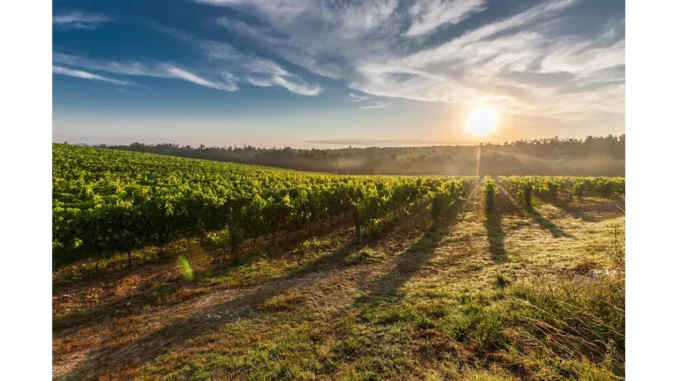
When it comes to picking the perfect wine, whether for a dinner party or a quiet evening at home, the task can feel daunting. The sheer variety of grapes, regions, and producers often leads to a dizzying array of choices. To shed some light on this complex world, I sat down with Ian McAllister, a seasoned sommelier who has spent over two decades curating wine lists for some of the finest restaurants around the globe. Our conversation centred around a simple yet profound tip: “Look for specific geographies on the label. The more the label pinpoints the location of the source of the grapes, the more likely your wine will be quality.”
Ian welcomed me into his home, a charming cottage nestled in the rolling hills of the English countryside. As we settled into the cosy living room, surrounded by walls lined with wine bottles, Ian began to recount how he had first stumbled upon this nugget of wisdom.
“Back in the early 2000s, I was working at a bustling restaurant in New York City,” Ian recalled. “We had an extensive wine list, and I remember feeling overwhelmed by the sheer volume of choices. It was during this time that a mentor of mine shared this golden rule: focus on the geography.”
Ian explained that the geography of a wine is akin to its DNA. “The region, the climate, the soil – they all contribute to the unique character of the wine,” he said. “When a wine label specifies a particular vineyard or estate, it’s often a sign of quality because the producers are proud of their terroir and its influence on the wine.”
Ian’s journey through the world of wine has taken him to illustrious vineyards across France, Italy, and Spain. His eyes lit up as he spoke of the rolling vineyards of Burgundy and the sun-drenched plains of Rioja. “In regions like these, the specificity of location is a mark of pride. It tells the consumer that the grapes were grown in a particular microclimate, which greatly influences the taste and quality of the wine.”
I asked Ian to explain how this knowledge could benefit the average wine consumer, someone who might feel intimidated by the thought of selecting a wine based on its geography. He chuckled softly, “It’s simpler than it sounds. When you’re at a wine shop or browsing a restaurant wine list, take a moment to look at the label. Does it mention a specific vineyard, estate, or sub-region? If so, that’s often a positive sign.”
He went on to provide some practical examples. “In the United States, for instance, wines that list a specific American Viticultural Area (AVA) like Napa Valley or Russian River Valley are generally of higher quality than those that simply say ‘California’. Similarly, in France, a label saying ‘Bordeaux’ is broad, but if it mentions ‘Saint-Émilion’ or ‘Pauillac’, you’re likely in for a treat.”
Ian also emphasised the importance of being cautious, especially with generic terms like ‘Reserve’ on US labels. “Unlike in Europe, where terms like ‘Riserva’ in Italy or ‘Gran Reserva’ in Spain have specific legal definitions, in the US, ‘Reserve’ can sometimes just be a marketing term. So, always look for that geographical specificity.”
Our conversation drifted towards the impact of climate change on wine regions, a topic Ian is particularly passionate about. “With shifting climates, traditional wine-growing areas are changing. Some regions that were once too cold are now producing excellent wines. It’s an exciting time for wine enthusiasts because it means new regions are emerging, offering fresh and diverse flavours.”
As our discussion drew to a close, Ian shared his final thoughts. “Ultimately, wine is about enjoyment and discovery. Don’t be afraid to explore. Use the geography as your guide, but also trust your palate. Wine is a journey, not a destination.”
Leaving Ian’s home, I felt armed with more than just a tip about wine labels. I had gained insight into the artistry and passion that goes into each bottle. The next time I find myself staring at rows of wine bottles, I’ll remember Ian’s advice: look for the story in the geography, and let it guide you to a quality experience.
Salena Ripley


Be the first to comment